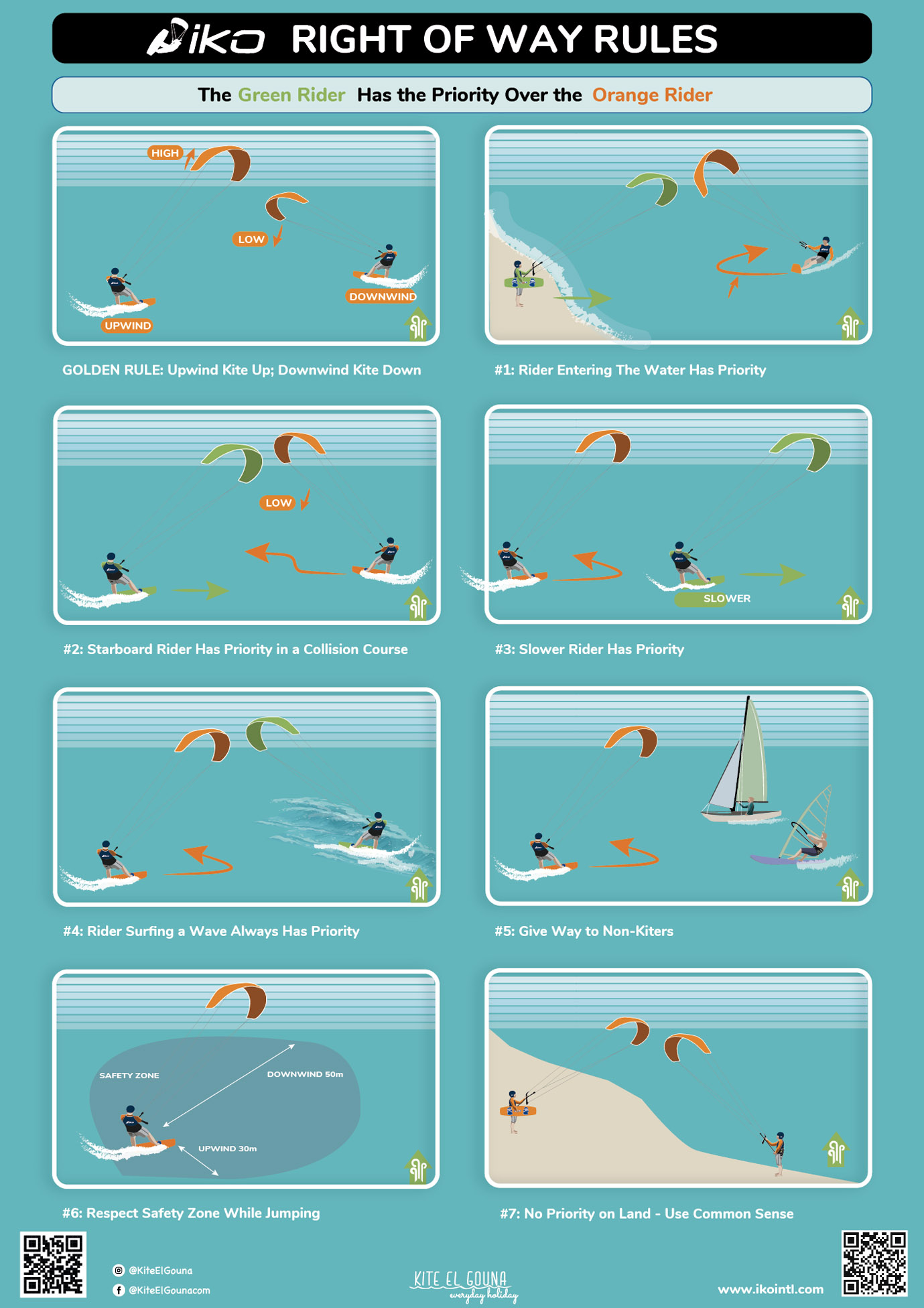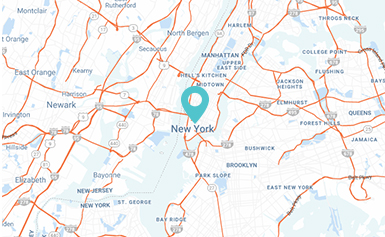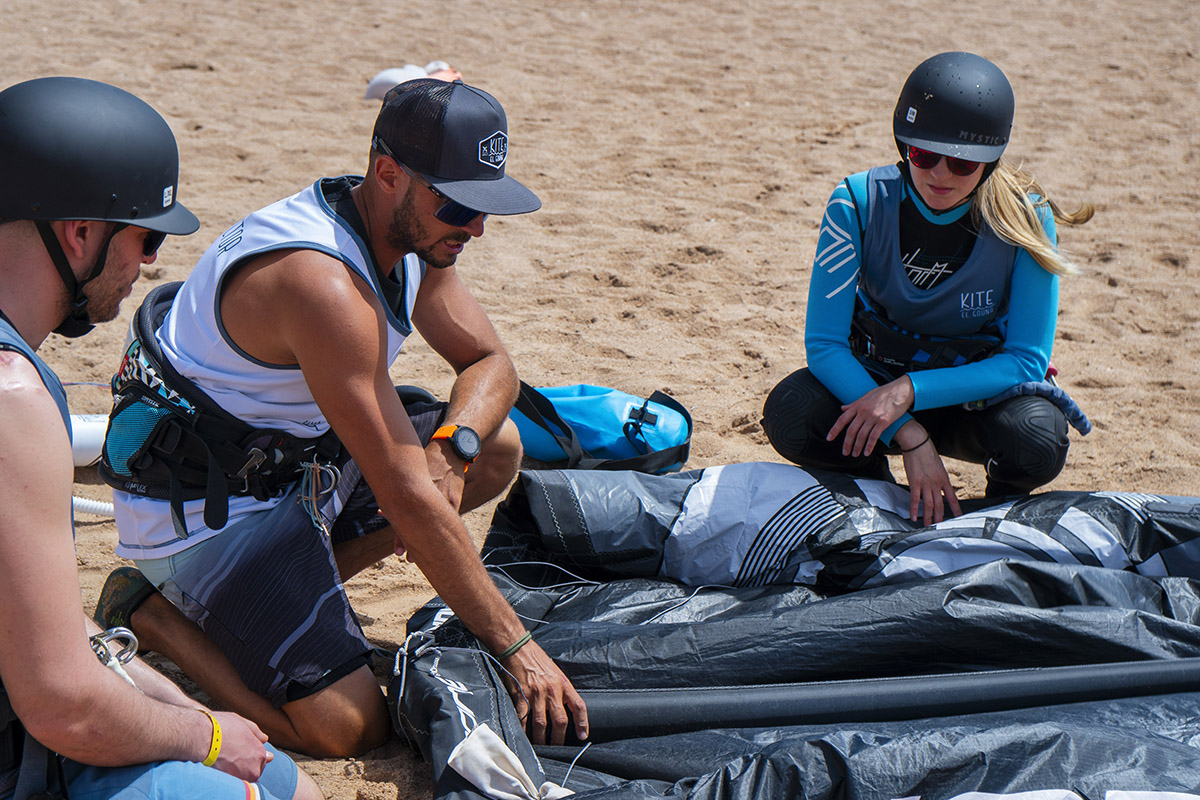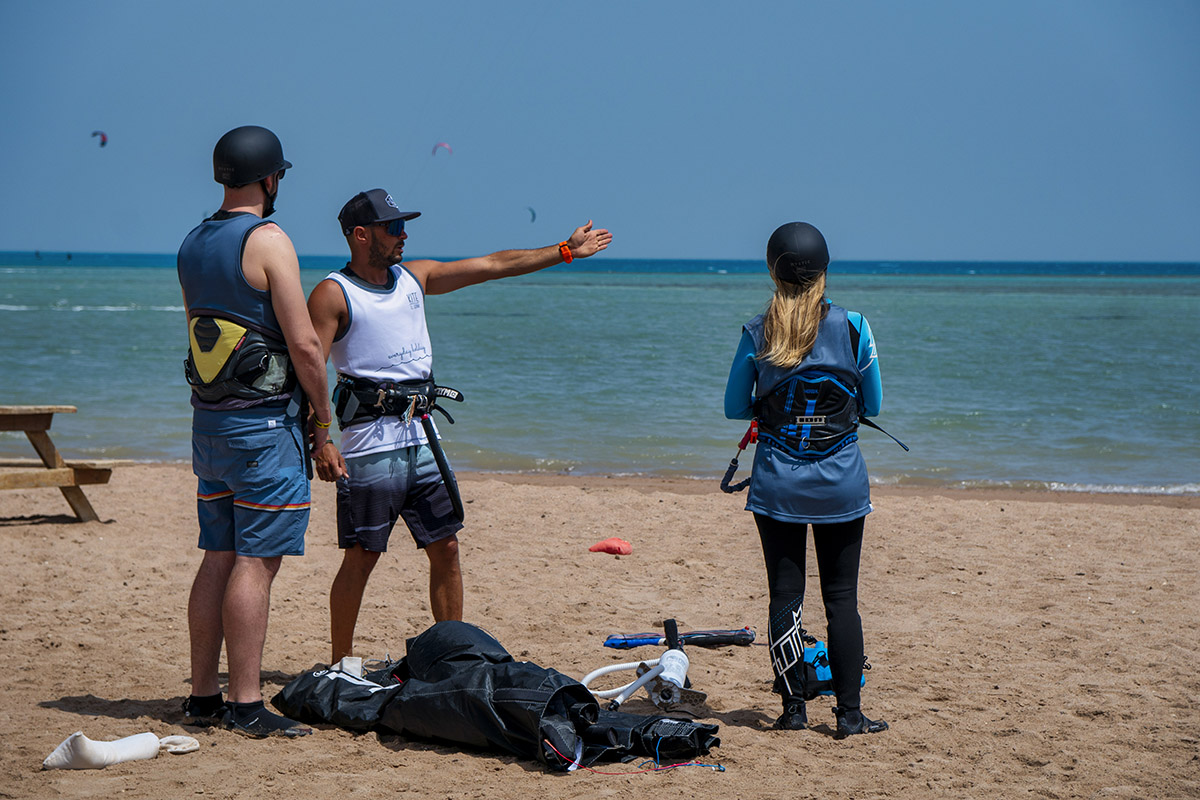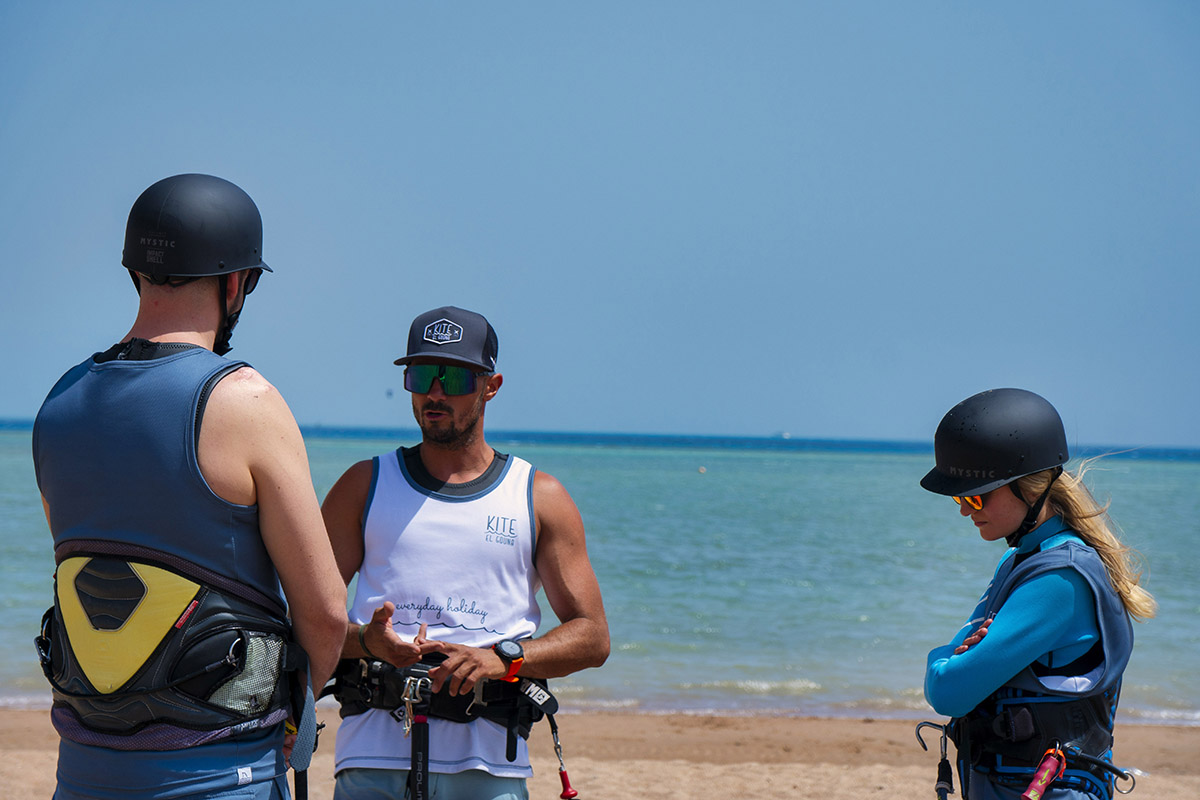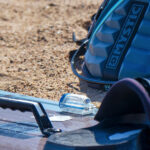“Follow the rules and you'll enjoy kiting much more.”
Kite El Gouna team
Knowing the principles of safe kiting is very important. It is essential to realize that kiting is a very safe sport, provided that the basic safety points are observed.
“Follow the rules and you’ll enjoy kiting much more.”
What are the basic principles of safety while kiting?
- Invest in good equipment that matches your level of kiteboarding.
- When learning, do not underestimate the amount of time spent on the water with an instructor.
- If you want to buy second-hand equipment, make sure it is still in good condition.
- Make sure you know how the safety system works – every time you go into the water (depower, chickenloop, leash).
- Learn the rules – ROW (Right of Way)
- Find out information about the place where you are going (corals, obstacles, swimming zones, sea currents, wind, etc.).
- If possible, do not go kiteboarding alone.
- Make sure you know how to self-rescue.
- If something unexpected happens in the water, try staying as calm as possible
- If you’re an advanced kiter, don’t move too close around the beginners and if possible, give them way.
- Watch the situation on water closely, keep track of what’s going on.
- Check your equipment regularly.
- Don’t use damaged equipment! It is crucial to have it adjusted professionally.
- Before starting, check that the kite is inflated, that the cords are tied correctly, that the waist harness and the connection of the leash and chickenloop are alright.
- Do not start the kite in a place full of people or too close to other people.
- Do not ask a person, who is not a kiter, to start or land the kite.
- Do not kite in bad weather (storms, thunderstorms).
- Do not jump in a crowded place, near the coast and various objects.
- Always count on a safe return even when the wind situation changes.
- Always offer help to other kiters in trouble – but always with regard to your own safety and experience.
- Do not overestimate your own strength.
- After kiteboarding, always secure the kite against unintentional take-off.
- Do not leave the kite in direct sunlight or wind to extend the life of the equipment.
What signals should we know?
On a kite beach, you will encounter different types of signals that you need to know. They are used mainly because the kites do not hear well in the wind, and therefore it is safer to only show a signal from a distance.
- Thumbs up: “Everything’s fine” or “I’m ready to start the kite”.
- Tapping on the top of the hand with your palm: “I want to land my kit”.
- Aim both arms left or right: “Go this way”.
- Flat palm facing the person: “Wait” or “Stop”.
- Aim your hands directly at the sky: “Move the kite to the zenith position / 12 o’clock”.
- Press both hands outwards from the waist and repeatedly: “Release the safety system”.
- Wave both hands over your head repeatedly, “I’m in need and need help.”
- Raise your hand and circle with your finger: “I want to change direction”.
- Wave your forearms horizontally in front of your chest: “Stop firing the dragon”.
- Put a flat hand in front of your forehead: “I lost my equipment”.
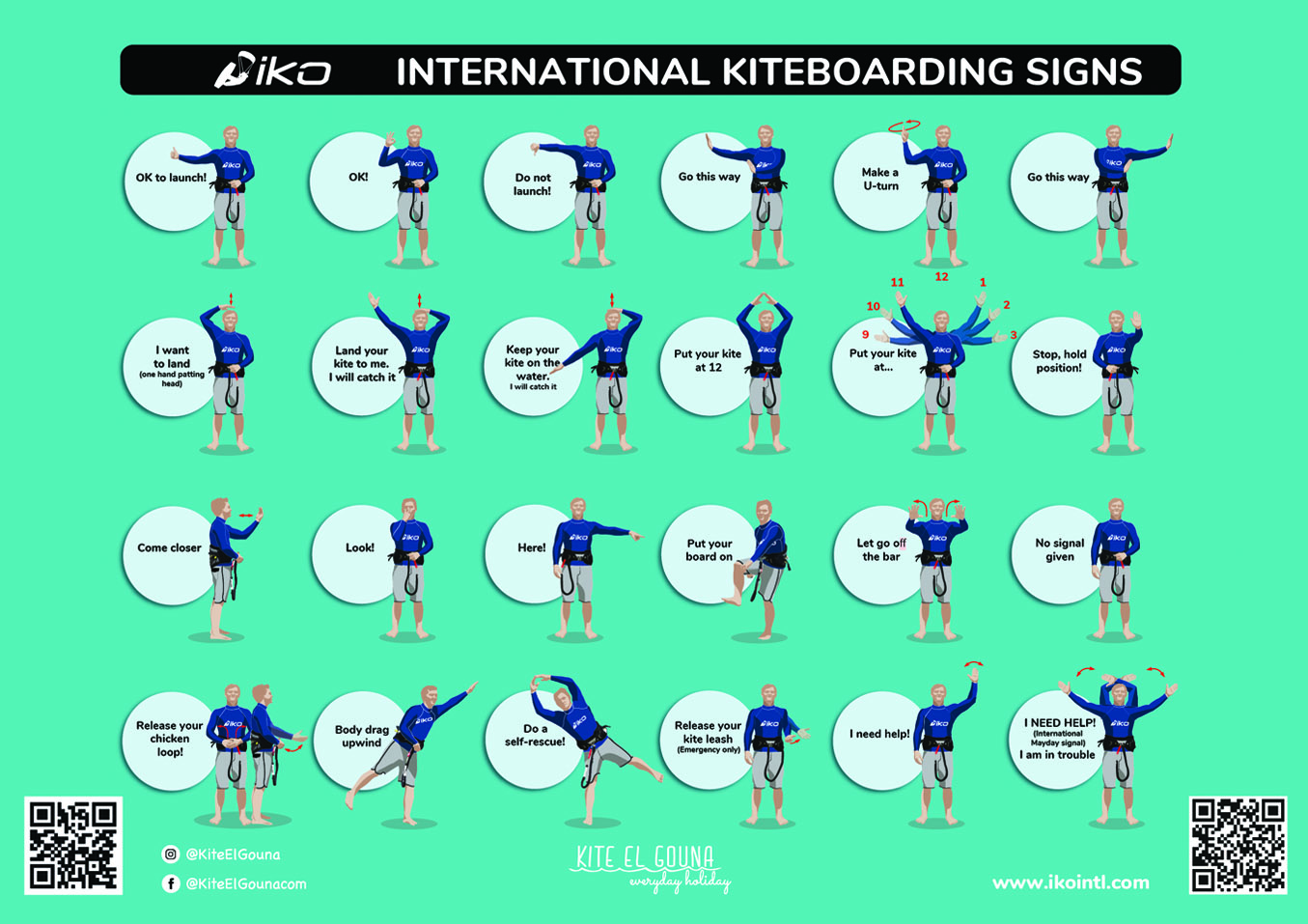
What are the rules of way – ROW (Right of Way)?
- The most important rule on the water is, of course, to constantly monitor the situation and be constantly alert.
- Because the wind on the beach is often erratic and gusting, the one who goes into the water with the kite takes precedence over the one who is leave him enough space.
- The kiter who is about to land with the kite has the priority over all take-offs.
- The rule of the right hand (Right is Right) tells us that if two kiters go against each other, then the one with the right hand in front takes precedence. The oncoming kiter (with the left hand in front) should allow him to continue driving smoothly without forcing a change of direction.
- If two riders are driving in the same direction, the faster one must give way to the slower one.
- Faster kiter should usually avoid other kiters with the bottom in the direction of the wind. More experienced kiters can go around safely – climb the top against the wind.
- It is always necessary to maintain a sufficient distance from the slower rider.
- The rider, who is higher upwind, controls all riders below him and should not restrict or endanger them in any way.
- The jumping kiter guards the free space below him for at least 3 lengths of its lines.
- A kiter descending a wave has the right to take the way, as the surfer has limited opportunities to drive the kite. But if he is close to the shore, he must again watch out for the kiter entering the water.
